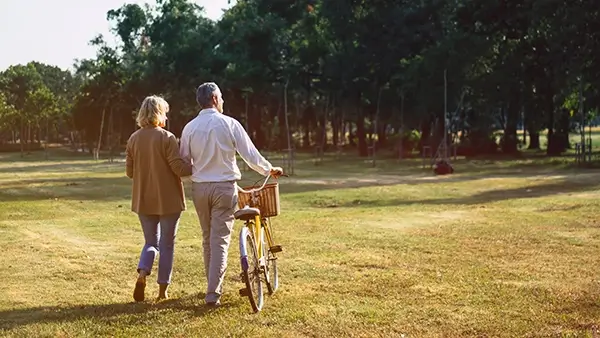Types of Arthritis: Osteoarthritis vs. Rheumatoid Arthritis
Arthritis is a common cause of joint pain and it typically affects older individuals (although some children can develop get juvenile arthritis). Arthritis is a general term for a condition that affects the joints and surrounding tissues. Joints are places in your body where the bones come together, for example: knees, wrists, shoulders, fingers, toes, and hips. There are two major types of arthritis.
The Two Common Types of Arthritis Are:
- Osteoarthritis (sometimes referred as “wear-and-tear” arthritis)
- Rheumatoid arthritis
The main difference between the two types of arthritis is that osteoarthritis is a painful, degenerative joint disease that often involves hips, knees, neck, lower back, or small joints of the hands. In contrast, rheumatoid arthritis is an autoimmune inflammatory disease that involves various joints: fingers, thumbs, wrists, elbows, shoulders, knees, feet, ankles.
Osteoarthritis
Osteoarthritis is known as the most common form of arthritis among older individuals and is one of the most frequent causes of physical disability among older adults. Osteoarthritis occurs when the tissue that cushions the ends of the bones with the joints, known as cartilage, breaks down and wears away. This results in the bones rubbing together, causing a grinding sensation. The most common symptoms of knee and hip arthritis include:
- Pain with activities
- Limited range of motion
- Locking or sticking of the joint
Rheumatoid Arthritis
As an autoimmune disease, rheumatoid arthritis causes the body to releases enzymes that attack its own healthy tissues. The enzymes destroy the linings of the joints, which may cause pain, swelling, stiffness, malformation, and reduced movement and function. Studies have found that there is an increased risk of bone loss and fracture in individuals living with rheumatoid arthritis.
Managing Arthritis Pain
Most people with arthritis use pain management strategies initially, and many have benefitted greatly from exercise programs that include physical therapy and rehabilitation. However, orthopedic doctors can offer non-surgical and surgical treatments to help patients with arthritis best manage their pain.
Non-invasive treatments include healthy diet and exercise; physical therapy to help promote flexibility and strength; and medications, alongside different types of injections. For more serious cases, surgical treatment options may give you the most relief from your arthritis pain.
G2 Orthopedics Treats Various Types of Arthritis
Dr. Vic Goradia at G2 Orthopedics and Sports Medicine offers non-surgical and surgical treatments for people who suffer from arthritis. He provides individualized treatment for all of his patients, taking into account their symptoms, lifestyle, and the cause of their arthritis pain. To see what arthritis treatment you’d be the best candidate for, book an appointment.
References:
https://www.bones.nih.gov/health-info/bone/osteoporosis/conditions-behaviors/osteoporosis-arthritis


